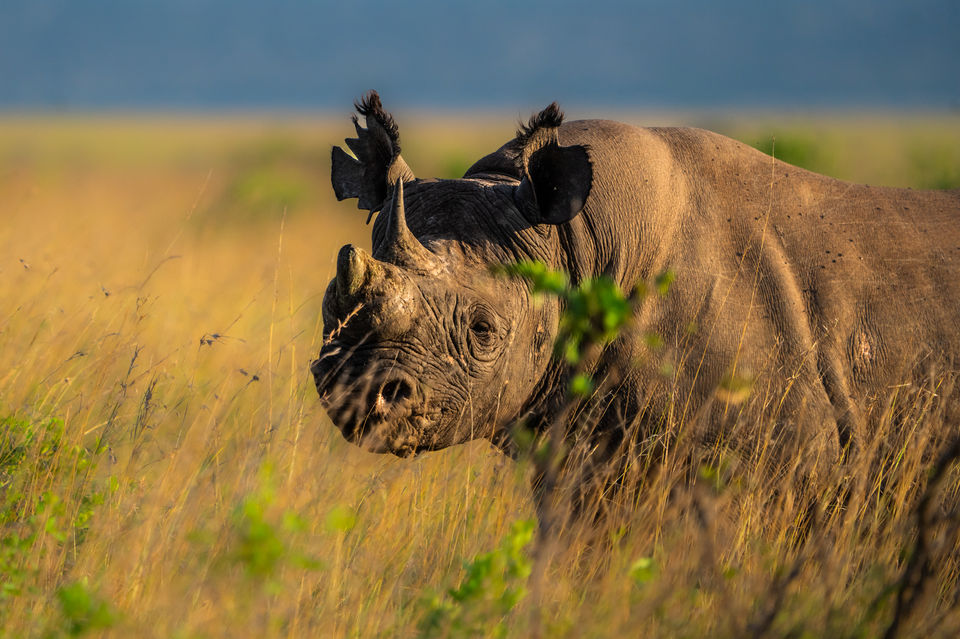
Loisaba Rhinos
Loisaba Conservancy is one of the few remaining places in the world where you can see both black and white rhinos in the wild...
Eastern black rhinos are critically endangered. They have faced decades of poaching and habitat loss, which has severely reduced their population. Globally there are fewer than 7,000 remaining. Numbers of southern white rhinos have also dramatically decreased, and the northern white rhino is now considered functionally extinct. This is why conservation efforts for this incredible species are so important.
Loisaba Rhino Sanctuary
Loisaba Conservancy is home to one of Kenya’s newest rhino sanctuaries – a 45,000-acre secure area within our 58,000-acre landscape, created to give rhinos the space and protection they need to thrive.
Working with Kenya Wildlife Service (KWS) and partners including The Nature Conservancy, San Diego Zoo Wildlife Alliance, Elewana and others, Loisaba now safeguards both critically endangered eastern black rhinos and southern white rhinos as part of Kenya’s national rhino recovery plans.
Eastern Black Rhinos
In early 2024, 21 eastern black rhinos returned to Loisaba for the first time in over 50 years, establishing a new breeding population in a landscape where the species had disappeared in the 1970s.
These founders were carefully translocated from Nairobi National Park, Ol Pejeta Conservancy and Lewa Wildlife Conservancy to relieve pressure on crowded sanctuaries and expand secure habitat as part of Kenya’s National Black Rhino Action Plan to build a metapopulation of 2,000 animals.
Loisaba’s low-impact fencing, 24/7 ranger protection, K9 unit, and intensive monitoring (including GPS tracking and EarthRanger) are designed to keep these critically endangered rhinos safe while giving them room to breed and eventually roam more widely across the conservancy.
Since their arrival, six calves have been born – an excellent sign of a healthy settled population and an early indicator that the sanctuary is providing safe, spacious habitat where rhinos can thrive and the population can grow.

Southern White Rhinos
In August 2025, Loisaba welcomed 10 southern white rhinos, translocated by KWS from Lewa Wildlife Conservancy and Meru National Park in a 10-day operation using best-practice capture and veterinary techniques.
Today, Loisaba is home to 11 southern white rhinos, making it one of the few conservancies in Kenya protecting both black and white rhino populations within the same secure landscape.
Although southern white rhinos are not native to Kenya, the country now holds the third-largest population globally, after South Africa and Namibia, and plays a key role in their conservation and recovery. With their arrival, Loisaba became Kenya’s 12th southern white rhino sanctuary – strengthening the national strategy to spread rhino populations across secure, well-managed landscapes and using tourism and education to build broader support for conservation.
How You Can Help
Protecting rhinos is a long-term commitment – from 24/7 ranger patrols and monitoring to community outreach and habitat management. Your support is vital to the success of our rhino conservation efforts. Here’s how you can get involved:
Our Commitment to Rhino Conservation
At Loisaba Conservancy, we are dedicated to restoring and protecting rhino populations as a key component of our broader conservation mission. Through innovative management, strong partnerships, and community involvement, we strive to create a sustainable future for rhinos in Kenya. Join us in our journey to ensure that these magnificent creatures continue to roam freely in their natural habitat.


























